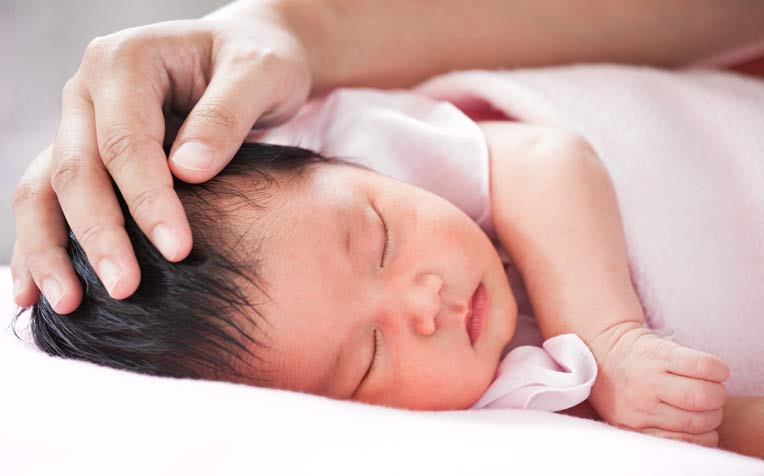
Flat head syndrome: there's much you can do for baby at home. Read the tips below.
Putting a baby to sleep on the stomach is a no-no because of the risk of sudden infant death
syndrome. But putting a baby to sleep on its back can lead to a flat head or positional plagiocephaly.
Flat head syndrome: how it happens
A baby’s skull is made of soft, malleable bones, and sleeping on its back can lead to a flattening of the back of the head. In most cases, the condition isn’t serious and the flattening is mild. Any imbalances will even out as the baby starts to lift its head more, starts sitting up at around six months, and spends less time lying down, said Dr Ng Wei Di, Consultant, Department of Neonatology, KK Women's and Children's Hospital, a member of the SingHealth group.
When sleeping too, a baby will change its position more often than when it was a newborn, alleviating the pressure on the back of its head. “A baby might start to develop flat head syndrome before birth if its skull is pressured by the mother’s pelvis or a twin,” said Dr Guadalupe Viegelmann, from the General Paediatrics Service, also from KK Women's and Children's Hospital.
Premature babies are more prone to flat head syndrome as they have softer skulls and don’t turn much when sleeping. Babies with tight neck muscles are also prone to the problem as they tend to keep their heads turned to one side, Dr Viegelmann said.
Flat head or plagiocephaly

Sleeping on its back for a long period of time can cause a flattening of the head. Plagiocephaly, however, does not affect
the development of the brain, but can affect physical appearance in adulthood.
Flat head syndrome: how to treat it
Treatment is usually not needed as the condition usually corrects itself with time.
However, in severe cases, repositioning therapy or cranial remoulding with corrective helmets may be needed, the doctors said. When the condition is severe, the two sides of the face may not be symmetrical, with the ears and other features on one side of the face misaligned with the other. One ear might stick out more or be positioned differently from the other ear, the forehead might be uneven, or the cheek, face and jaw are different from the other side.
When babies are seen for the problem before they reach the age of six months, repositioning therapy is usually recommended. This involves changing the position of the baby’s head during sleep or playtime to avoid pressure on the flattened area, said Dr Ng. When done regularly, repositioning therapy can correct most flat head problems.
If flat head syndrome persists beyond the age of six months, cranial remoulding with corrective helmets might be used to correct the shape of the head. Treatment is best done before the age of 12 months when the skull begins to harden. So if flat head syndrome is suspected, a specialist should be consulted when the baby is between four and eight months of age.
Flat head syndrome: what you can do at home
There is much that can be done at home to ensure that a baby has a head with a well-rounded shape.
- When the baby is awake, put it on its stomach for supervised “tummy time”.
- Take baby out of the pram or car seat when not travelling. This will ensure that it isn’t lying on its back for long periods, and avoids excessive pressure on the back of the head.
- When baby is asleep, gently change the position of the head so that the flattened side is facing up.
- Babies have a natural tendency to look out of their cribs at its surroundings, so if the crib is placed against a wall, change the sleeping position so that the baby has to turn its head to look at things around it.
- While there are pillows on the market for flat head syndrome, doctors discourage their use as these pillows are not scientifically proven to mitigate flat head syndrome. They also contravene American Academy of Pediatrics guidelines, which include recommendations for babies to always sleep on the back on a flat, firm surface without duvets, quilts, blankets, wedges, bedding rolls or pillows.
Ref: N18



















 Get it on Google Play
Get it on Google Play